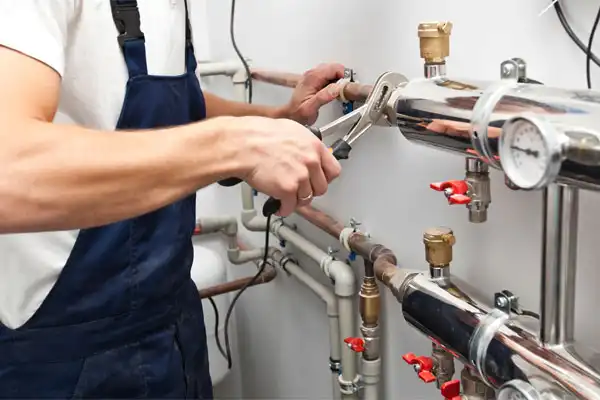Sign up for this awesome deal today!
When you need Heating services, trust the experts at The Bee Heat & AC. Our technicians have the skills, knowledge, and tools to fix most General Heating problems on the spot.
When your The Bee Heat & AC technician arrives at your home they will explain all of your options before starting repairs, so you can make informed decisions before any work begins. We service and repair most brands of equipment, so you can trust us to perform a professional Repair job.
We’re not happy until you’re happy.
Still have questions? Contact Us for all your Heating related questions!
The Bee Heat & AC is Proudly & Professionally Offering Related General Heating Maintenance Services in the Centennial, CO area.

The Bee Heat & AC | Centennial, CO‘s Trusted Heating Professionals
We offer a full line of installation, maintenance & repair that your home’s Heating may require, no matter the problem or time of year. You can count on the trusted professionals at The Bee Heat & AC for exceptional service & quality craftsmanship.
The Bee Heat & AC is proudly & professionally serving the greater Centennial, CO area.
Your HVAC and heating systems require annual maintenance to run efficiently and last as long as possible. The additional benefits of heating maintenance are endless. Some of the most important advantages of heating maintenance include:
Repairs can be costly and add up quickly. Save money in the long run by catching potential problems before they require repair and enlist our pros for any necessary maintenance.
When your HVAC system is not properly maintained, it needs to work twice as hard to do its job, costing you on your monthly utility bills. Reduce those costs by ensuring your HVAC heating system is using less energy with an annual tune-up.
Most heating system manufacturers require that you have documented yearly maintenance from certified technicians in order to validate any warranty terms. Don’t let your warranty go to waste! Schedule your annual HVAC heating tune-up today!
Keep the air quality in your home clean and healthy with a professional heating tune-up! Your HVAC and air ducts can become dirty, causing excess dust throughout your home, which can be a major irritant for those in your household with allergies, asthma, or other respiratory issues.
There is no arguing that ensuring your heating system is properly maintained with annual professional maintenance will extend the lifespan of your unit, saving you money in the long run. Most HVAC systems last between 15 and 20 years and the better they are maintained, the longer they last.
HVAC systems that are not professionally maintained are significantly less energy efficient, causing them to run more often and work harder to heat your home comfortably. Overworking your heating system like this not only increases your monthly utility bills, but also negatively impacts the environment. Keep Centennial, CO thriving and maintain your heating systems!
Our Centennial, CO experts specialize in all Heating services, so call us today or schedule service via our contact us form. No matter the request, our Centennial, CO experts are ready with a hassle-free solution with upfront pricing & customer satisfaction, guaranteed.
Have a question about your General Heating? Ask an expert from The Bee Heat & AC below for fast answers & get reliable service that your neighbors trust!
Is your home’s Heating experiencing issues? The Bee Heat & AC is the trusted name in Centennial, CO Maintenance services near you. Schedule your service today & ensure your Maintenance is on it’s way!
Upgrade your home hassle-free with our flexible financing options. From repairs to installations, we’ve got you covered. Contact The Bee Heat & AC today to discover the perfect plan for your dream Centennial, CO home!
Regularly inspecting and maintaining your system is the best way to ensure that your heating bills remain as low as possible. Additionally, keeping areas around vents free from obstruction and closing curtains when windows are exposed to direct sunlight can help reduce heat loss through those areas. To learn more, call the heating experts at The Bee Heat & AC today!
A typical inspection includes cleaning internal components such as burners and heat exchangers; checking wiring, controls, and safety systems; lubricating moving parts; testing ductwork for air leaks; checking thermostat accuracy; verifying airflow levels; and inspecting other components of the furnace. To schedule your annual heating tune-up, call the pros at (720) 263-1981 for prompt service.
If your system isn’t producing enough heat or cycles on and off frequently, it may need repair. Additionally, strange noises coming from the unit, an increase in energy bills, or a burning smell are all indicators that your system could need attention. To determine if your heating system is in need of repair, bring in the experts at The Bee Heat & AC right away.
Copyright © 2025 The Bee Heat & AC. All Rights Reserved. Privacy Policy. Powered by Camp Digital.